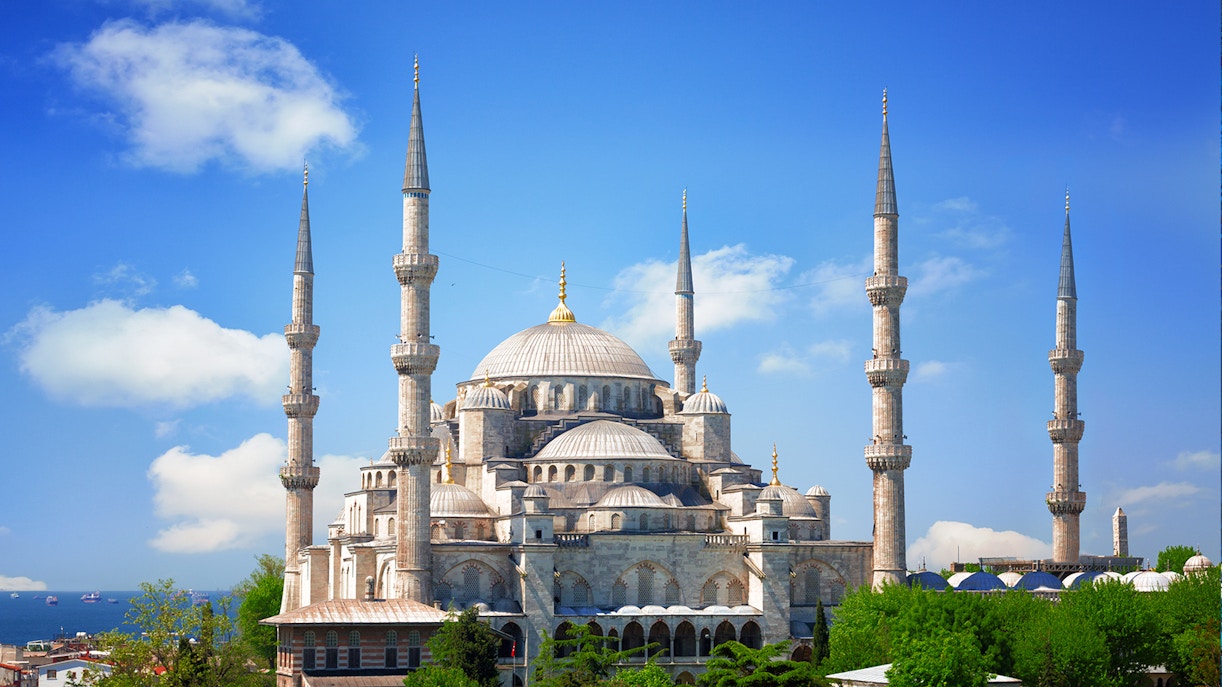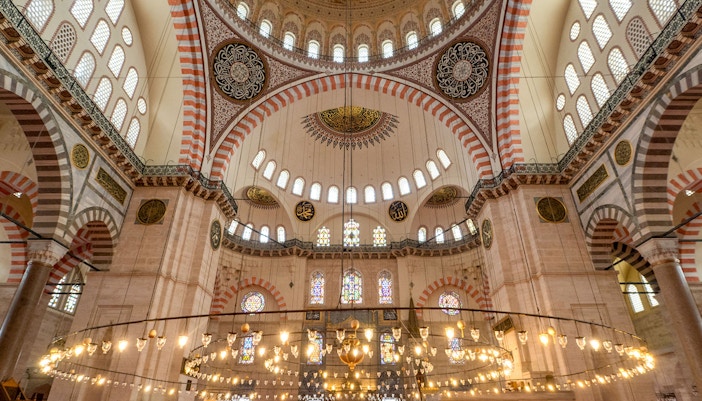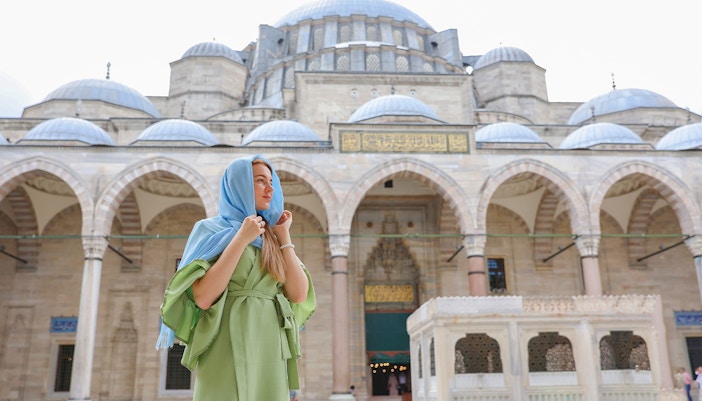1609-1616
Commissioned by Sultan Ahmed I to revive Ottoman grandeur after military setbacks, the Blue was designed by renowned Ottoman architect Mehmet Aga. It is celebrated for its intricate designs and mastery of light and space. Its construction began in 1609 and lasted seven years, engaging thousands of skilled artisans and laborers. The result is a breathtaking architectural gem, a testament to the resilience and artistic prowess of the Ottoman Empire during its cultural zenith.
Blue Mosque history explained

Origins and construction
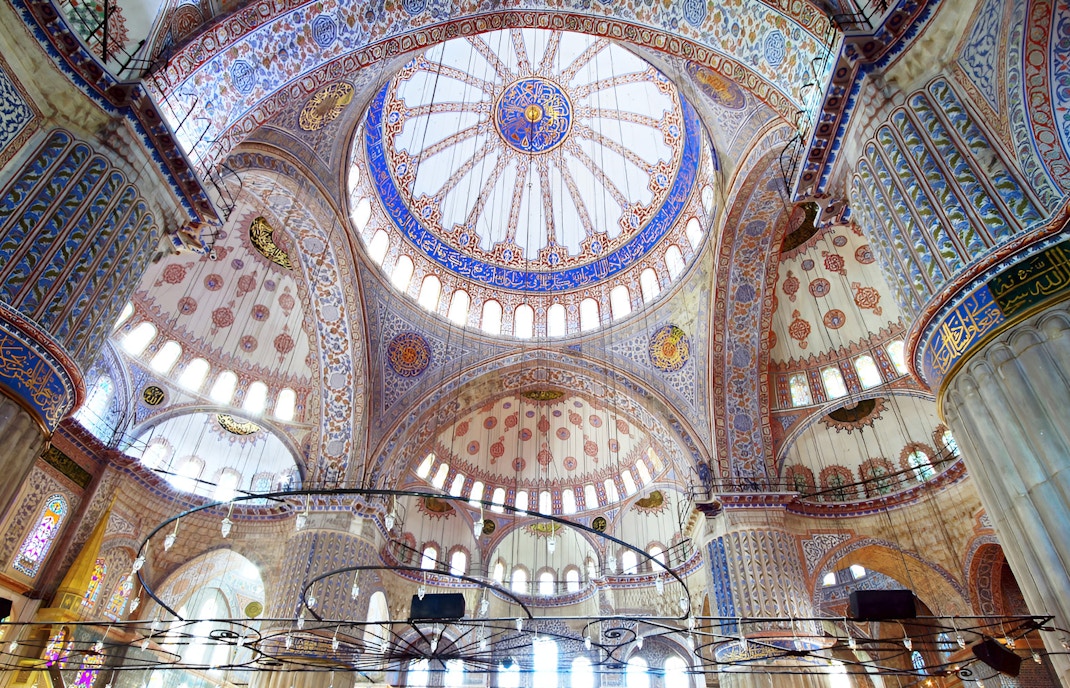
Completion and dedication
1617
Completed in 1616, just before Sultan Ahmed I's passing in 1617, the Blue Mosque stands as a testament to Ottoman architectural prowess. Dedicated to Sultan Ahmed I, it became a prominent symbol of his reign. The mosque's completion marked the culmination of a vision that now endures as a timeless representation of Ottoman grandeur and artistic achievement.
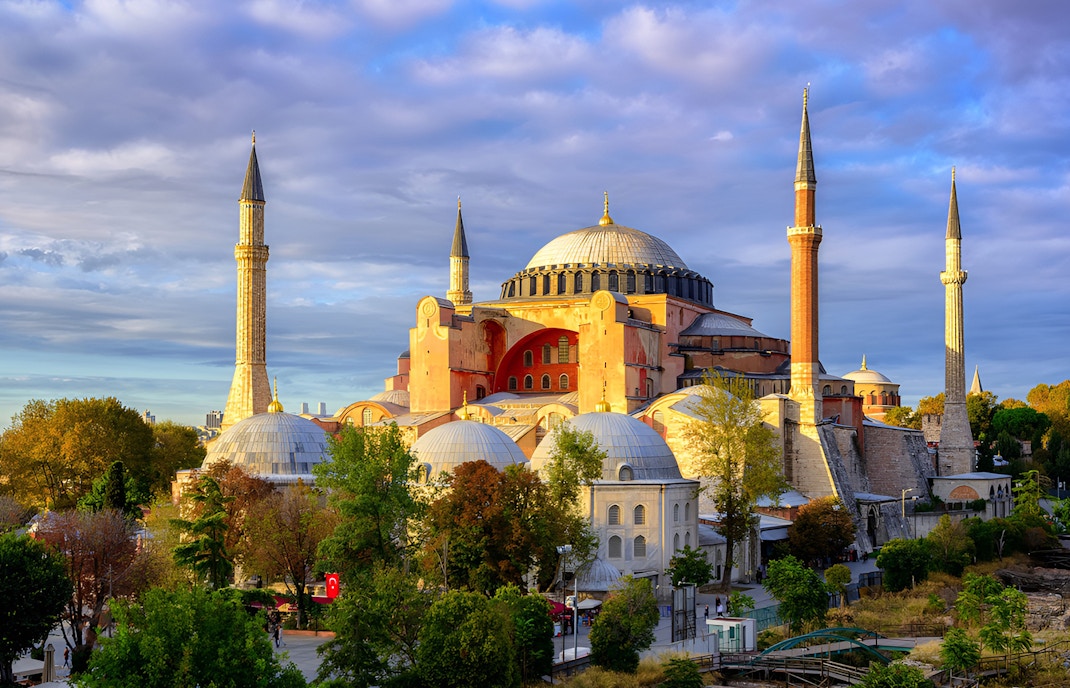
Restoration and preservation
1934-1952
In 1934, the Blue Mosque underwent a significant restoration project to preserve its architectural integrity and beauty. The restoration addressed structural damage, cleaned and restored Iznik tiles, and maintained intricate calligraphy. Reopened to the public in 1952, the Blue Mosque showcased its renewed splendor, reaffirming its historical significance as a cultural and architectural gem that continues to captivate visitors with its timeless elegance and artistic magnificence.
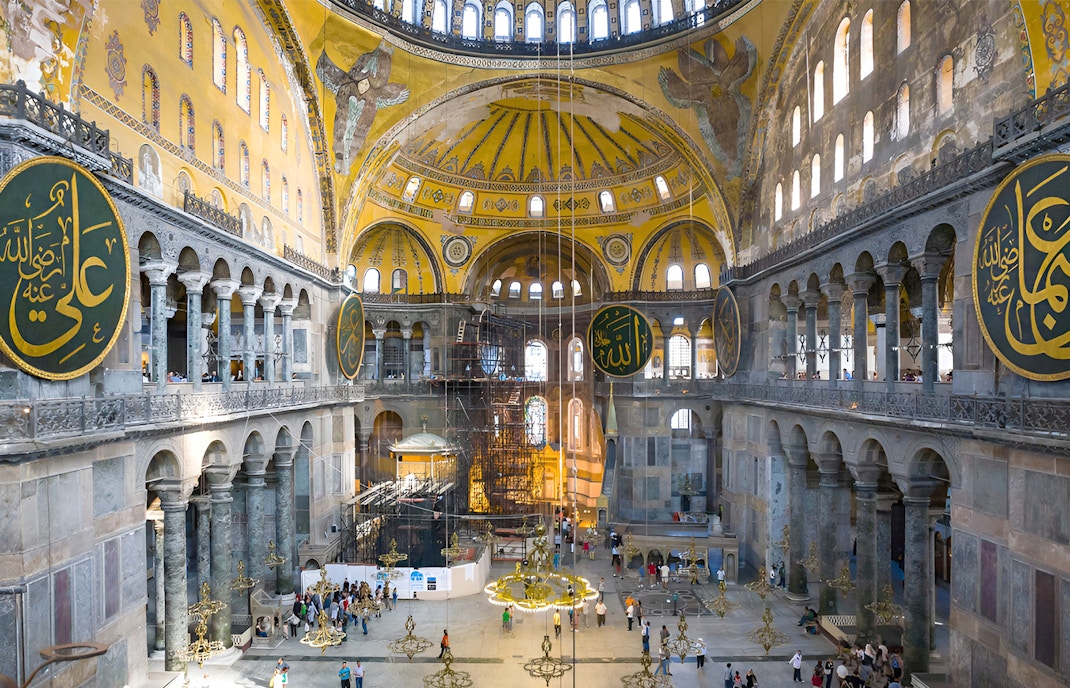
Enduring legacy and cultural significance
1617-present
For centuries, the Blue Mosque has been a revered place of worship, providing a serene environment for prayer and reflection. As an iconic symbol of Istanbul, the mosque embodies Ottoman craftsmanship, standing proudly as a testament to Turkish culture. Its enduring allure continues to captivate both worshippers and tourists, preserving the city’s heritage and offering a glimpse into Turkey's vibrant history.
